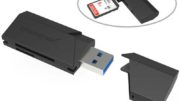Good golly. I remember the first time I sent an e-mail. It was the 1980s, those days of green screens and printers the size of refrigerators. It was a great time to be a computer hobbyist and frankly, a lousy time to try to be productive with a computer. That first email, by the way, was to someone in the same room. Electronic messaging between locations came a few months later when the computer lab got connected to other labs. It wasn’t instantaneous back then, either. You’d send a message and it would take at minimum two days for a reply. That’s because all the internet traffic was limited to a short window in the middle of the night.
And we were glad to have it
Back then, you had two ways of communicating with someone. Postal mail was cheap — about 12 cents for a letter if I recall — but took several days if you were communicating out of state. Want to talk to someone out of the country? Get prepared to pay quite a bit more and wait for weeks.
The other option, of course, was a voice call. Voice calls were as good as things got back then. Of course they were instant, but if you weren’t calling someone in the same town, they weren’t free. Back then you’d pay by the minute, and depending on where you were calling the prices were steep.
Take a look back
In case you weren’t tech-savvy back then (or weren’t alive back then) here’s a recently-unearthed video segment showing the pain and suffering we all went through just to get online and then send a quick message. Seriously, sending snail mail was slower, but not much. Oh. My. Gosh.
You’ll also notice that this is a British video. For a short time, Britain and France were far ahead of the US in this kind of personal computing. The online experience in the 1980s was dominated by Compuserve in the US, but British and French teletext systems were a lot more advanced. They were also more accessible to the average person, owing to heavy government subsidies available at the time.

It feels weird to say it, but the most advanced online experience available in the US belonged to Radio Shack’s Videotex system. It was basically their Color Computer running different software, and for a base price of $400 (which didn’t include the modem, software, or monitor) you could get online. Keep in mind you could rent a house in the 1980s for $400. Videotex would let you access emails, if there was anyone to email with. The package wasn’t very successful. I guess it was ahead of its time.
This (was) how we do it
Take a look at this British video on emailing. Warning – you’ll hear the reporter say “mo-dem” with a funny accent, enough times that it will get on your nerves. Hopefully you’ll be able to get past that and marvel at the amazing technology being presented there. And, then you can be glad that things got a lot, lot better than this.




